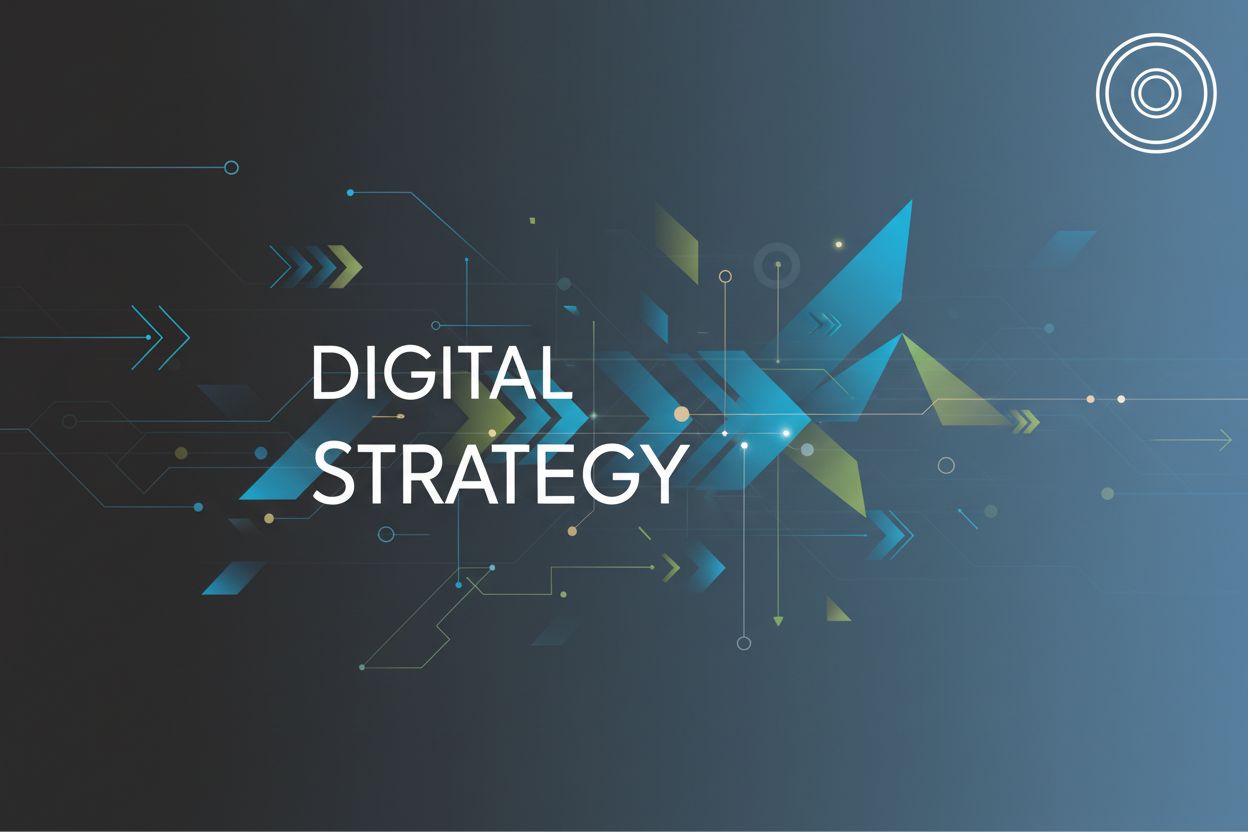Top Marketing and Promotion Strategies for the Gaming Industry
TL;DR
Understanding the Gaming Landscape
Okay, let's dive into the crazy world of gaming marketing, eh? It's not just about slapping ads on a screen anymore; it's a whole different beast. Think of it as infiltrating a culture, not just targeting a demographic.
So, who are these gamers, anyway? They're not all teenage boys in basements, that's for sure! It's actually a super diverse crowd. United Esports notes that gamers span across generations, including Gen Z, and women make up a significant portion. (ESA REVEALS LATEST US GAMER DEMOGRAPHIC DATA) Like, your grandma could be secretly crushing it on Candy Crush – you never know!
- Diverse demographics: Gamers come from all walks of life, shattering stereotypes.
- Age is just a number: Gaming isn't just for the young; it appeals to all ages.
- Know your gamer: Understanding their preferences (genres, platforms, influencers) is crucial.
That last bit is key, honestly. You can't just throw money at any random ad and expect results. It's like trying to sell steak to a vegetarian – doesn't work, right?
Then you have to figure out where these peeps are hanging out. PC, consoles, mobile – it’s a whole ecosystem. And don't even get me started on the emerging trends; esports is massive, VR/AR is getting there, and the metaverse is, well, trying to be a thing.
- Platform Variety: pc, consoles, mobile gaming, and streaming platforms (twitch, youtube gaming) are key channels.
- Emerging Trends: esports, vr/ar, and metaverse gaming are emerging trends.
- Cross-Platform is King: cross-platform accessibility and integration is increasingly important.
But here's the real kicker: it's gotta be seamless. Nobody wants to be stuck on one device when their friends are gaming elsewhere.
The following sections will delve into specific marketing strategies that leverage these insights and aim to feel like organic parts of the gaming experience.
Leveraging Influencer Marketing
Okay, so you wanna get gamers on your side? Influencer marketing can be a pretty solid move, but it's not like just throwing money at anyone with a webcam. You gotta be smart about it.
First thing's first, you gotta figure out who to partner with. Are we talking micro-influencers who have a smaller, but super-dedicated following, or are we going for the big guns, the macro-influencers? Both have their perks, honestly.
- Micro-influencers can be more authentic, and their audience trusts them more.
- Macro-influencers have a wider reach, but it might not be as targeted.
The key thing is, does this person genuinely fit your game, your brand? Is their audience actually gonna care? The Game Marketer points out influencers offer an authentic, trusted connection. (Why does influencer marketing thrive on authenticity? (+5 examples)) If you're selling a gritty, post-apocalyptic shooter, you don't want some cutesy lifestyle vlogger.
How to Evaluate Influencer-Brand Fit:
- Content Analysis: Dive deep into their past videos and streams. Does their personality and humor align with your game's tone? Do they play similar genres?
- Audience Demographics: Look at their audience data. Are the viewers primarily within your target age range, geographic location, and interest groups?
- Past Collaborations: Review their previous sponsored content. Was it well-integrated and well-received, or did it feel forced and out of place?
- Engagement Quality: Beyond just follower count, assess the quality of comments and interactions on their posts. Is it genuine discussion or just spam?
Now, what do you do with these influencers?
- Sponsored content is the obvious one – reviews, gameplay videos, live streams.
- But think about giving them exclusive content or early access. That way, their audience feels special, too.
Long-term partnerships can be great, but sometimes a single, well-executed campaign is all you need. It really just depends on the game, the influencer, and what you're trying to achieve.
Next up, we'll get into how to actually figure out if all this influencer stuff is even worth it.
Optimizing Social Media Engagement
Alright, so you wanna turn social media into your own personal gaming billboard, huh? It's more than just posting screenshots and hoping for the best, trust me. It's about creating a vibe that sucks people in and makes them wanna know more, y'know?
Each social media platform has its own little quirks and what works on one, might totally bomb on another. Think of it like this:
Twitter is your real-time hype machine. Quick updates, contests, and chatting with the community? Perfect for this.
Instagram? All about the visuals. Screenshots, trailers, concept art – make it look good.
YouTube is where you drop the gameplay bombs. Developer diaries, live streams-- give 'em the goods.
TikTok is for those bite-sized moments. Short, engaging clips, trending challenges, stuff that'll catch their eye as they scroll.
Discord, that's where you build the clubhouse. Exclusive content, feedback, all the good stuff for your die-hard fans.
It's not enough to just be on these platforms; you gotta give people a reason to stick around. Think about it, would you wanna follow a feed that's just constant ads? Nah, me neither. Try this instead:
- Give 'em a peek behind the curtain. Show how the sausage is made.
- User-generated content is gold. Fan art, gameplay highlights -- let your community shine.
- Interactive stuff is always a win. Polls, quizzes, q&a sessions -- get 'em involved.
- And for the love of all that is holy, respond to comments. Be active, be present.
The next step? Figuring out how to throw some money at the problem, in a smart way, of course.
In-Game Advertising and Brand Integration
Alright, let's talk about getting your game noticed, eh? In-game advertising is kinda like sneaking your message right into the action--but don't be a jerk about it! Think of it as a subtle wink, not a full-on jump scare. This is another strategic way to invest your marketing budget effectively.
So, what are your options for planting those little seeds of marketing? Well, there's a few:
Display ads: Billboards or banners within the game world. Think those racing games where you're speeding past a virtual ad for, I dunno, a fictional energy drink. In a sports game, you might see ads on stadium hoardings, or in a city-builder, perhaps on virtual shop fronts. These can be effective for brand awareness, but can also be ignored if not well-placed.
Dynamic product placement: This is where things get interesting. Imagine your character chugging a real-world soda for a health boost. It's gotta fit the game, though. For instance, a character in an adventure game might use a specific brand of flashlight, or a player in a life-sim might order food from a recognizable delivery service. This can be highly effective if it feels natural, but risks breaking immersion if it's too overt.
Branded in-game items and experiences: This is where you can really enhance the gaming experience by weaving brands into the fabric of the game in a meaningful way. For example, a fashion brand could offer in-game skins or outfits for characters, allowing players to express themselves. A car manufacturer could feature their latest models as drivable vehicles in a racing or open-world game, offering players a chance to experience them virtually. These integrations can feel like exciting new content rather than intrusive ads, making players more receptive and even appreciative.
The trick is to make it fit. You don't want folks rage-quitting because your ad is blocking their view, right?
Esports Sponsorships and Tournaments
Esports sponsorships and tournaments? Talk about leveling up your marketing game! It's not just about slapping your logo on a jersey; it's about becoming part of the gaming culture.
Sponsoring esports teams and individual players can give your brand serious cred with gamers. But, you can't just pick any team, you know?
- Brand Alignment: Make sure their vibe matches yours. If you're selling high-end gaming PCs, sponsoring a top-tier Counter-Strike team makes sense, right?
- Negotiate Smart: Get clear on what you're getting—logo placement, social media shout-outs, appearances at events? Spell it out!
- Long-Term Value: Think of it as building a relationship, not just an ad buy. A consistent presence can build trust over time.
Hosting or sponsoring tournaments amps it up. It's all about creating a buzz and getting gamers hyped.
- Branded Tournaments: Imagine a "Red Bull Rocket League Open." It's your brand, their game, everyone wins.
- Prize Pools: Cash talks. Offer real incentives, and people will show up.
- Promote, Promote, Promote: Use every channel—social media, twitch, youtube--to get the word out.
As SAE Blog notes, events and conventions are a great way to expand your reach, so take full advantage of them.
Community Building and Engagement
Okay, so you've got folks hooked on your game, right? Now, how do you keep 'em around? It's not rocket science, but it does take some effort. Let's talk community.
Think of your game's community as a digital campfire. You want people to gather 'round. So, what's key?
- Create that sense of belonging. Exclusive content? Sneak peeks? Make 'em feel special, like they're in the know.
- Events, events, events. In-game challenges, online meetups - give people a reason to come together and play together.
- Listen up. Seriously. Solicit feedback, respond to concerns. Players become invested when they feel heard.
That last bit is huge, it shows that you care and are willing to make changes for the better.
Empowering Players and Fostering Creativity
Now that you've got a strong community, it's time to really let them shine. Empowering your players and encouraging their creativity can transform them from passive consumers into active brand advocates.
Here's how you can do it:
- Provide Tools and Platforms: Offer modding tools, level editors, or in-game creation suites that allow players to build their own content. Think of games like Minecraft or Roblox – their success is heavily driven by player-created experiences.
- Run Creative Contests: Host contests for fan art, custom game modes, lore-based stories, or even short films made within your game. Offer meaningful rewards to incentivize participation.
- Showcase Player Creations: Regularly feature the best user-generated content on your official channels – social media, website, or even within the game itself. This gives players recognition and inspires others.
- Involve Players in Development: Consider running beta tests for new features, soliciting ideas for future content, or even letting the community vote on certain design decisions. This fosters a sense of ownership and investment.
When players feel empowered to contribute and express themselves, they become more deeply connected to your game and more likely to evangelize it to others.
Analyzing Data and Optimizing Campaigns
Alright, so you've thrown your hat into the gaming ring, huh? Just launching a game and hoping for the best is like showing up to a boss fight with no potions. Let's get serious about tracking and tweaking so you're not just wasting coin.
First up, you gotta know your numbers. You can't just guess if your ads are working—you gotta know.
- Reach and engagement are your bread and butter. How many eyeballs are you grabbing, and are they actually doing anything? Shares, comments, clicks–that's the good stuff.
- Dig into player behavior. What levels are they getting stuck on? Are they rage-quitting after the tutorial? This data is straight gold for improving the player experience.
- cac (customer acquisition cost) and ltv (lifetime value). This is where the rubber meets the road, is it worth it? You need to know how much you're shelling out to get a player versus how much they're likely to spend on your game.
Understanding CAC and LTV:
- Customer Acquisition Cost (CAC): This is the total cost of your marketing and sales efforts divided by the number of new customers acquired during that period. So, if you spent $10,000 on ads and got 1,000 new players, your CAC is $10 per player.
- Lifetime Value (LTV): This is the total revenue you expect to generate from a single customer over the entire time they play your game. It's calculated by multiplying the average purchase value by the average purchase frequency and the average customer lifespan. For example, if players on average spend $50, buy something every month, and play for 6 months, their LTV is $300.
Ideally, your LTV should be significantly higher than your CAC (often a 3:1 ratio or more is considered healthy). This means you're making more money from a player than it cost to acquire them.
Okay, so we know what to track, but how do we do it? Lucky for us, there are plenty of tools.
- Start with the basics: google analytics for web stuff, app annie for mobile, and the built-in social media analytics dashboards. They’re not perfect, but they're a good starting point.
- Then, get into the nitty-gritty with game analytics platforms like Unity Analytics. These are built for gaming, so they track all sorts of player actions.
- And don't underestimate the power of a custom dashboard. Pull data from everywhere and put it in one place.
Now comes the fun part: tweaking and improving.
- A/B testing EVERYTHING. Ad copy, character images, even the color of the "buy now" button. Small changes can make a huge difference.
- Adjust campaigns based on what the data is saying. Maybe that TikTok campaign is a dud, but the Twitter one is killing it, so shift your resources.
- And finally, stay agile! Gaming trends change faster than you can say "loot box," so keep your ear to the ground and be ready to pivot.
By focusing on these metrics and using the right tools, you're not just throwing money into the void, you're making smart, data-driven decisions. This is the crucial final step in ensuring your marketing efforts are effective and sustainable.




